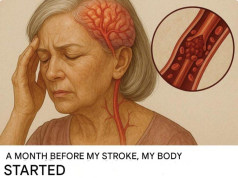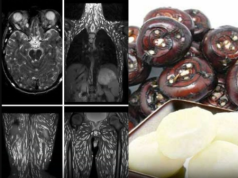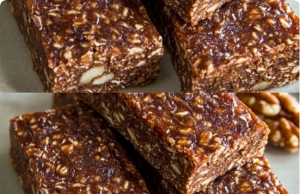Every cell in your body runs on energy — and the primary fuel for that energy is glucose, or blood sugar.
Glucose powers your brain, fuels your muscles, and keeps your heart beating.
Throughout the day, your blood sugar naturally rises and falls — especially after meals or during physical activity.
But when your blood sugar drops below 70 mg/dL, you enter a state called hypoglycemia — or low blood sugar.
And if left untreated, it can lead to confusion, seizures, or even loss of consciousness.
While people with diabetes are most at risk, anyone can experience low blood sugar — especially if they’ve skipped meals, exercised intensely, or consumed alcohol on an empty stomach.
The good news?
Your body sends clear warning signals — if you know how to recognize them.
Here are 12 key signs of low blood sugar you should never ignore.
🔔 1. Sweating (Even When It’s Not Hot)
One of the earliest and most common signs of low blood sugar is sudden, unexplained sweating — cold sweats, clammy skin, or waking up drenched at night.
This happens because your body releases stress hormones like adrenaline to raise blood sugar, triggering your sweat glands.
✅ Even if you’re not hot or exercising — if you’re sweating, check your blood sugar.
😠 2. Feeling Irritable or Moody
Have you ever snapped at someone for no reason — then realized you were just “hangry”?
That’s often a sign of low blood sugar.
When your brain lacks glucose, it struggles to regulate emotions — leading to:
- Irritability
- Anxiety
- Sudden mood swings
- Feeling “on edge”
This is especially common in children and people with diabetes.
🤸♀️ 3. Shakiness or Tremors
Feeling like your hands are trembling for no reason?
Low blood sugar triggers the release of adrenaline, which can cause:
- Shaky hands
- Nervous energy
- A jittery feeling — like you’ve had too much coffee
This is your body’s way of saying: “I need fuel — now.”
🧠 4. Brain Fog or Difficulty Concentrating
Your brain is a glucose hog — it uses about 20% of your body’s energy.
When glucose drops, your brain slows down, leading to:
- Trouble focusing
- Confusion
- Memory lapses
- Slurred speech
You might feel “spaced out” or unable to think clearly — even mid-conversation.
🥴 5. Dizziness or Lightheadedness
Feeling woozy or unsteady on your feet?
Low blood sugar can reduce blood flow to the brain, causing:
- Dizziness
- Lightheadedness
- A feeling like you might pass out
This is especially dangerous when driving, climbing stairs, or standing up quickly.
🫀 6. Rapid Heartbeat (Palpitations)
When blood sugar drops, your body releases epinephrine (adrenaline) — the “fight-or-flight” hormone.
This can cause:
- A racing heart
- Pounding in your chest
- Heart palpitations
You might feel your heart “racing” even when you’re sitting still.
🤢 7. Nausea or Hunger Pangs
Intense, sudden hunger — especially for sweets — is a classic sign of hypoglycemia.
Your body is screaming for quick energy.
You may also feel:
- Nausea
- Stomach discomfort
- A “hollow” feeling in your stomach
Even if you ate recently, your body isn’t getting the glucose it needs.
😴 8. Fatigue or Weakness
When your cells are starved of glucose, you feel drained, no matter how much you’ve slept.
Symptoms include:
- Sudden tiredness
- Heavy limbs
- Lack of energy
This isn’t just “being tired” — it’s your body running on empty.
👁️ 9. Blurred Vision or Double Vision
Low blood sugar can affect the nerves and blood vessels in your eyes, leading to:
- Blurry vision
- Double vision
- Seeing spots or halos
This usually resolves once blood sugar is restored — but it’s a serious warning sign.
🧊 10. Pale Skin
When blood sugar drops, blood flow shifts to vital organs — leaving your skin looking pale or ashen.
This is often accompanied by:
- Cold hands and feet
- Sweating
- Weakness
It’s a visible sign that your body is in survival mode.
🛌 11. Nighttime Symptoms (Nocturnal Hypoglycemia)
Low blood sugar can happen while you’re asleep — and it’s especially dangerous because you might not notice it.
Signs you had a nighttime drop:
- Waking up sweating
- Nightmares or crying out in sleep
- Headaches in the morning
- Feeling unusually tired upon waking
This is common in people with type 1 diabetes — but can affect anyone.
🚨 12. Confusion, Seizures, or Loss of Consciousness
In severe cases, untreated hypoglycemia can lead to:
- Confusion or disorientation
- Slurred speech
- Seizures
- Fainting or coma
This is a medical emergency — especially if the person can’t swallow.
💡 Never ignore severe symptoms. Call 911 or administer emergency glucose if available.
🍎 What to Do If You Have Low Blood Sugar
If you recognize these signs, act fast:
✅ The 15-15 Rule:
- Eat 15 grams of fast-acting carbs, such as:
- 4 oz (½ cup) of fruit juice
- 3–4 glucose tablets
- 1 tablespoon of honey or sugar
- Hard candies (check the label for 15g carbs)
- Wait 15 minutes, then check your blood sugar.
- If it’s still below 70 mg/dL, repeat.
Once stable, eat a balanced snack or meal to prevent another drop.
🛑 Who’s at Risk?
- People with type 1 or type 2 diabetes (especially on insulin or sulfonylureas)
- Those who skip meals or fast
- People who exercise intensely without refueling
- Heavy alcohol consumption on an empty stomach
- Certain medical conditions (like adrenal or liver disease)
🛡️ How to Prevent Low Blood Sugar
- Eat regular, balanced meals with protein, healthy fats, and complex carbs
- Monitor blood sugar if you’re diabetic
- Carry a glucose source (like tablets or juice)
- Avoid drinking alcohol on an empty stomach
- Adjust insulin or medication under medical supervision
- Educate family and friends on the signs — especially for children
💡 Final Thoughts: Your Body Is Talking — Listen to It
Low blood sugar doesn’t have to be dangerous — if you know the signs.
From sweating and shakiness to confusion and fainting, your body sends clear signals when glucose levels drop.
Don’t brush it off as “just being tired” or “hangry.”
Recognize the symptoms.
Act quickly.
Stay safe.
Because when it comes to your brain and body, glucose isn’t just fuel —
👉 It’s survival.
Stay aware. Stay balanced. Stay strong.










